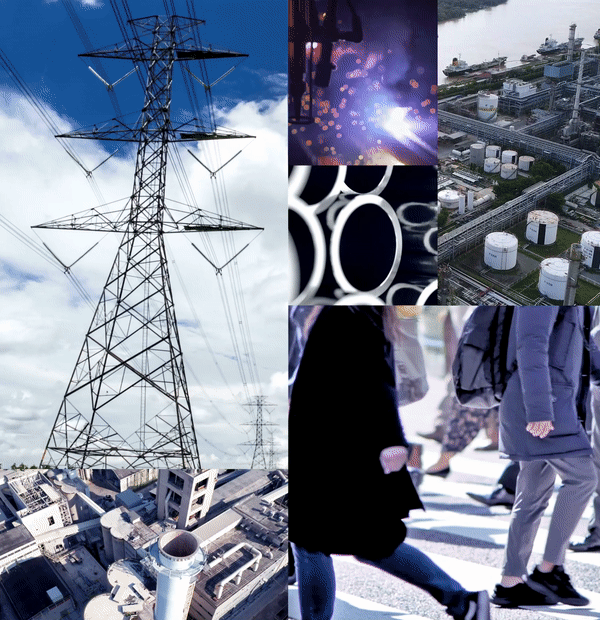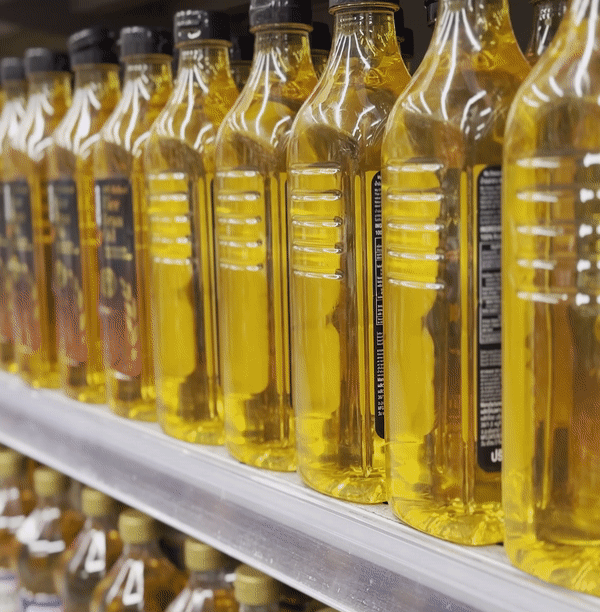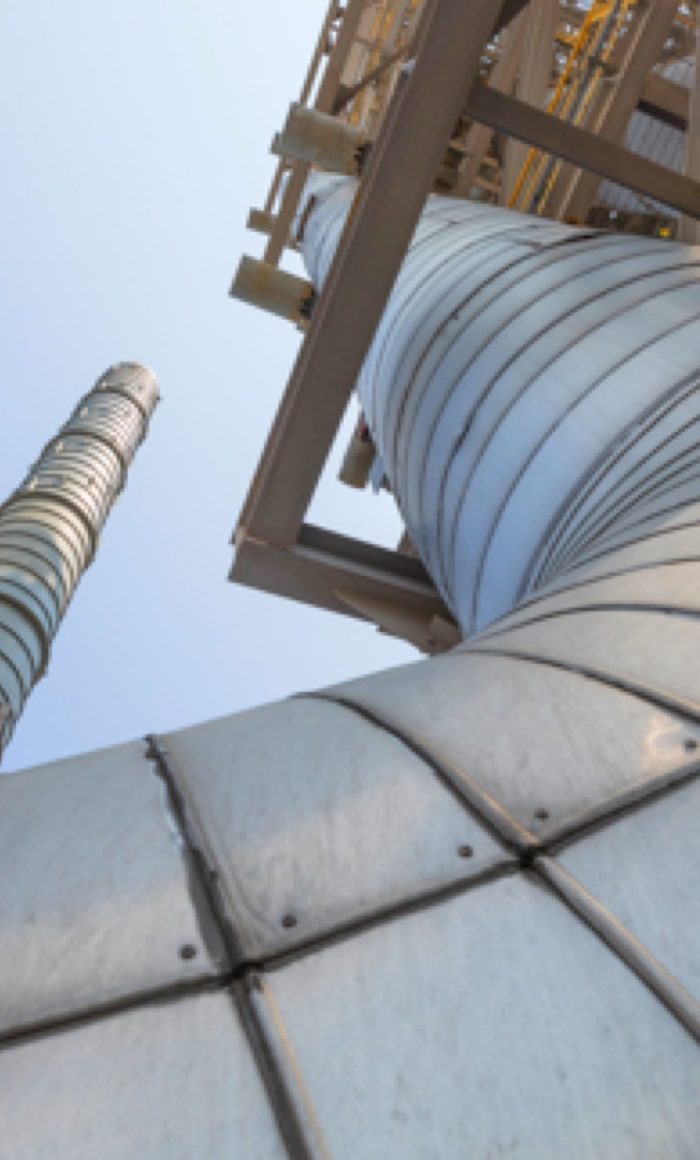But no matter the pathway taken toward that goal, experts agree carbon capture and storage (CCS) is one of the few technologies with the proven ability to help decarbonise the heaviest emitters of CO2.
CCS is a suite of technologies that can separate out CO2 at industrial sources or directly from the atmosphere. That ability can help change the trajectory of the world’s annual CO2 output.
Industry, such as cement production, steelmaking and the refining and chemical sectors, accounts for 25% of all energy-related and process CO2 emissions. And, due to the scale and investment needed, tackling industrial emissions has proven to be one of the biggest challenges in addressing climate change.
But the work that ExxonMobil and others are pursuing today could help make industrial solutions a reality – with an approach that includes advancing various pathways within the CCS family of technologies.
To better understand the challenges and possible solutions, here are some key elements to CCS and how it could help decarbonise our future.
The idea of carbon capture and storage is simple enough, despite the sophisticated, cutting-edge technology it requires. But merely capturing and storing CO2 is only part of the process – it also involves scaling an infrastructure around places like industrial hubs, much like what ExxonMobil and other companies are pursuing in Houston.
Here’s a look at how CCS works:
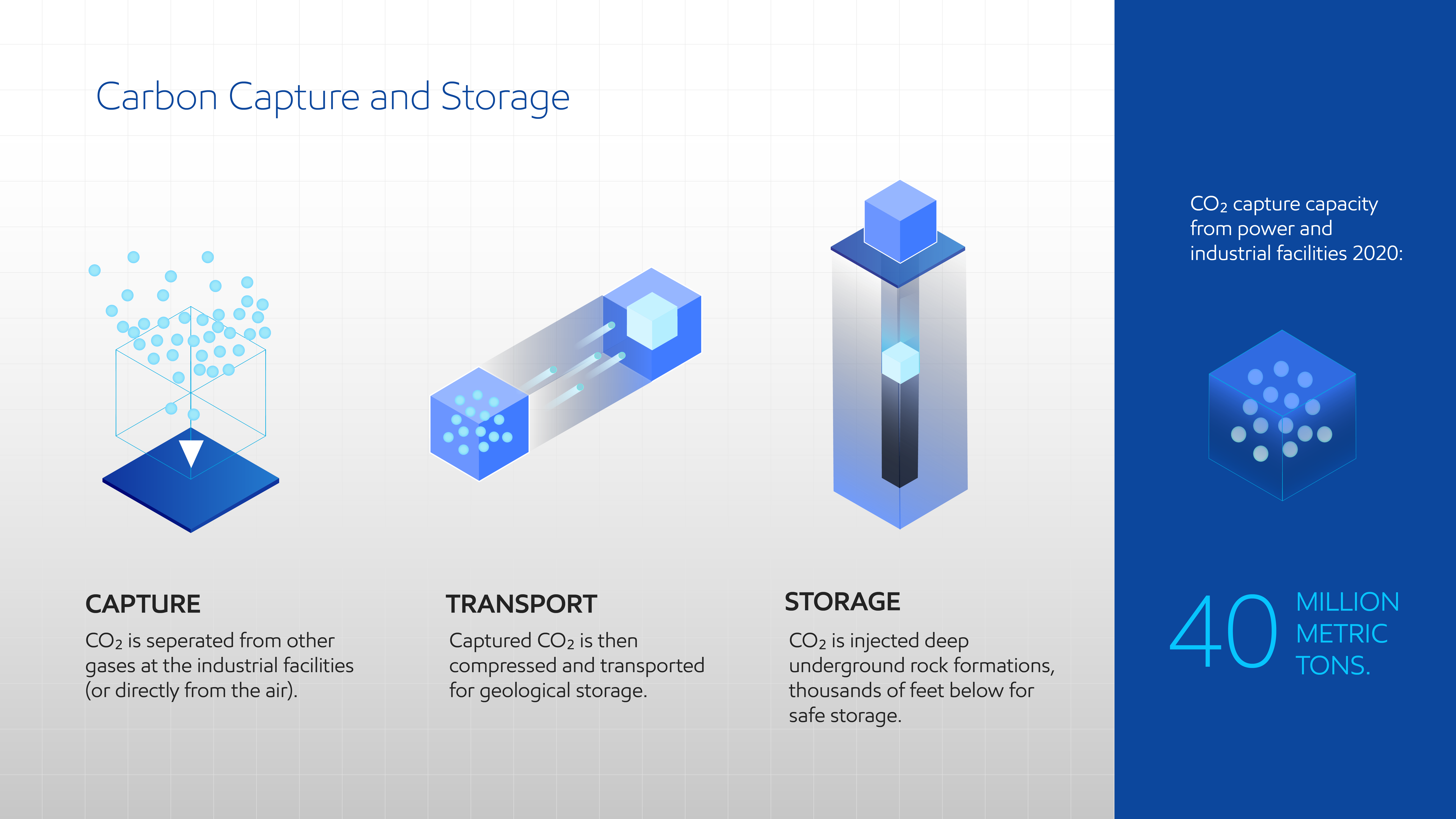
There’s a growing push to deploy CCS around the world in an effort to decarbonise heavy-emitting industrial facilities. The ongoing work to scale CCS solutions at these massive facilities is instrumental in meeting the world’s climate change goals.
Here’s a look at why decarbonisation is essential for that work:
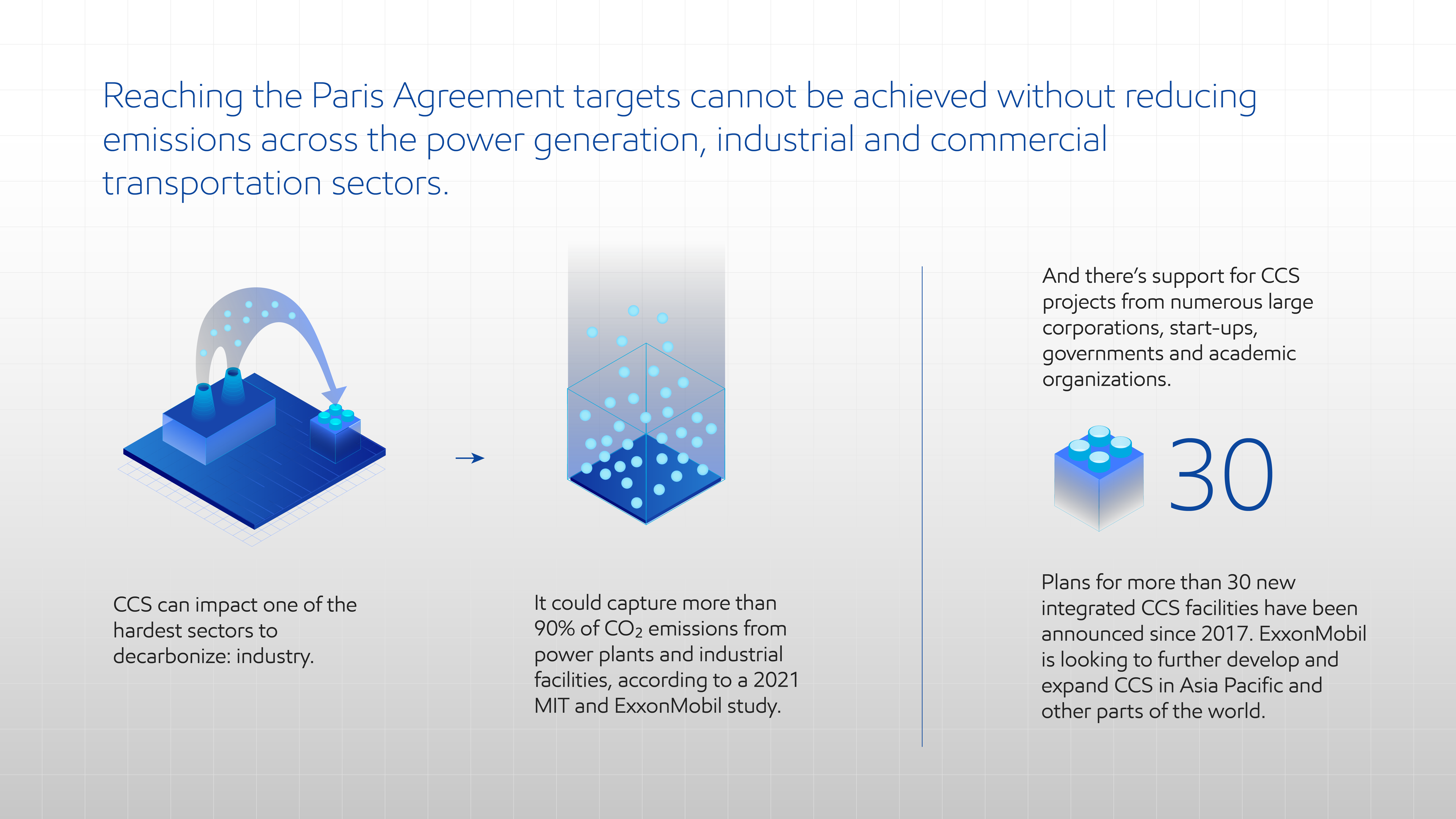
Once deployed, what does CCS mean for how the world gets the energy it needs?
Put simply, CCS installation at industrial sites – such as a refinery or cement plant – would enable the facility to continue producing the material needed for transportation, construction and infrastructure upgrades around the world, but without the majority of emissions we see today.
By capturing that CO2 before it reaches the atmosphere, industry can continue to produce the essential products society needs for daily life, while reducing its environmental footprint.
Here’s what a decarbonised world could look like:
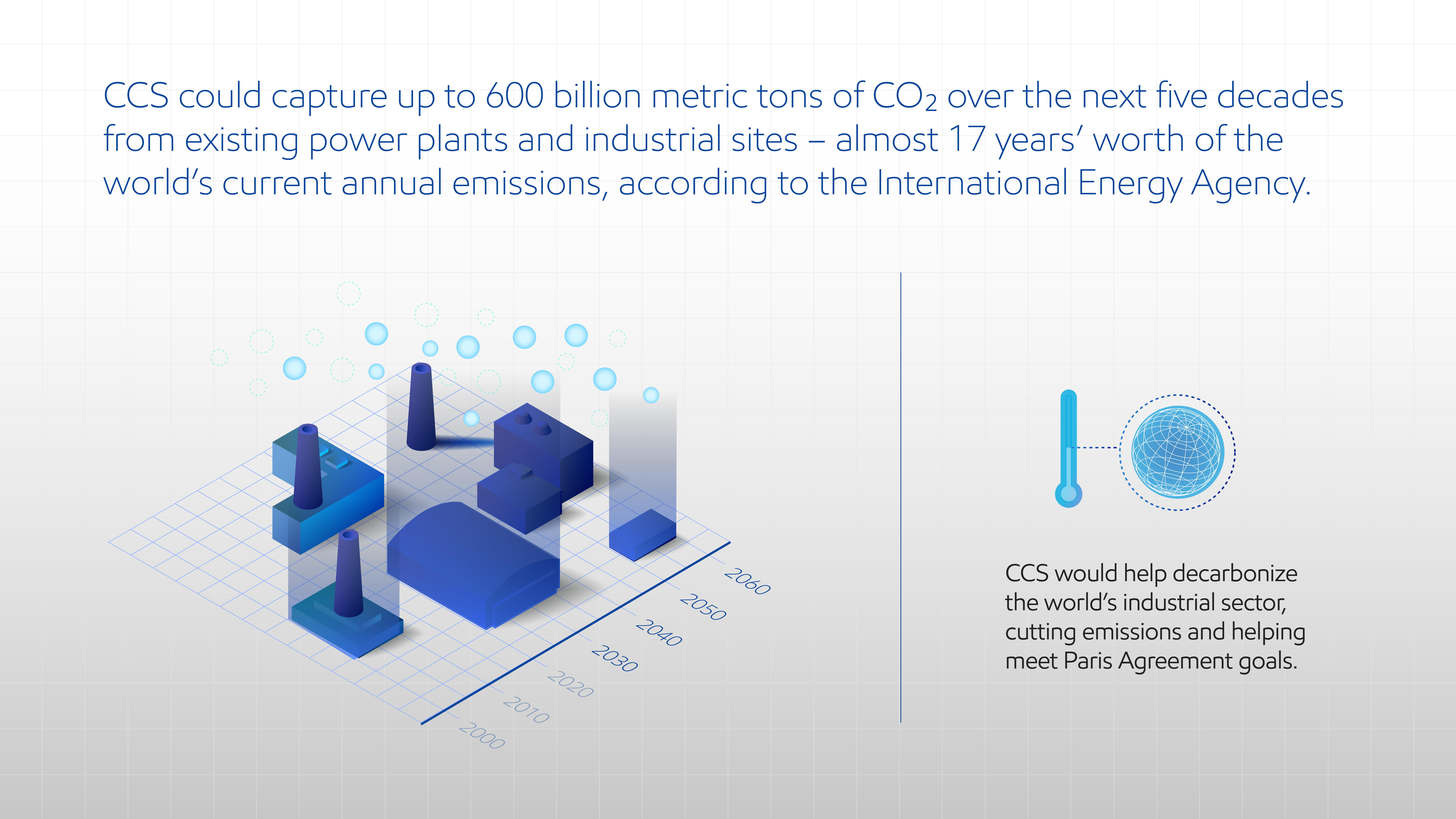
While the capturing of CO2 requires complex analysis and technology, that is just the start of the process. Once in hand, those molecules need to be transported and stored safely – a process that requires that same dedication and innovation.
A thorough understanding of the geology that forms the natural reservoirs below the earth and under the sea is needed to find the correct storage site. In order to safely and securely store those emissions, researchers at ExxonMobil apply their expertise based on decades of working with geologic formations.
Capturing and storing CO2 molecules remains a critical component to reaching Paris Agreement goals and provides various pathways to help decarbonise our world and energy use.
